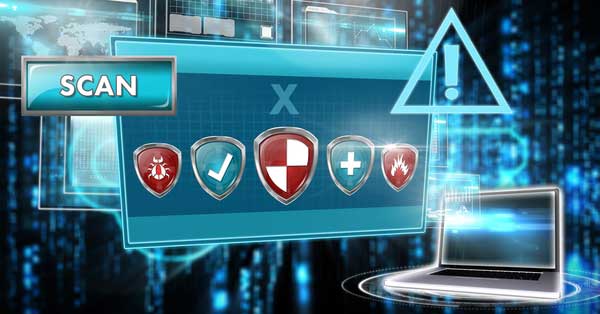In today’s digital landscape, ensuring robust endpoint security is more critical than ever. As organizations face increasingly sophisticated cyber threats, relying solely on traditional antivirus software is no longer sufficient. To provide comprehensive protection, businesses are turning to endpoint protection platforms (EPPs). In this article, we will explore the five key factors that make EPPs superior to traditional antivirus solutions. By understanding these components, you can make informed decisions to enhance your organization’s endpoint security.

Why Upgrade from Traditional Antivirus?
Traditional antivirus platforms serve their purpose by blocking known threats. However, they fall short when it comes to enterprise-level protection. EPPs offer a significant upgrade, providing a robust information and user protection platform. In this section, we will delve into the reasons why upgrading to an EPP is essential for optimal endpoint security.
The Distinction between Endpoint Protection and Endpoint Detection and Response (EDR)
Before we proceed further, it is crucial to differentiate between endpoint protection and endpoint detection and response (EDR). While EDR platforms encompass endpoint protection, not all endpoint protection platforms include EDR capabilities. Endpoint protection is a proactive service that scans files on the machine to identify potential threats, whereas EDR assumes a breach has already occurred and focuses on mitigation and remediation. Understanding this distinction is essential when considering your organization’s specific security needs.
The Power of Multiple Threat Intelligence Databases
Endpoint protection platforms leverage multiple feeds from threat intelligence databases, which is a fundamental aspect of their effectiveness. These databases provide the latest information and a comprehensive profile of malicious identifiers in the wild. By constantly scanning activity and files on a machine, EPPs compare their signatures against known malicious signatures, significantly enhancing threat detection capabilities. The advantage of multiple feeds is the increased likelihood of catching zero-day threats, as databases synchronize and share information. However, managing these feeds can be complex, making it advisable to rely on professional EPP providers who excel in handling this task.
The Role of Data Encryption
Data encryption plays a pivotal role in modern endpoint security. Encrypting data on endpoints, including individual computers and laptops, renders it unreadable to unauthorized individuals without the decryption key or cipher. Encryption safeguards sensitive information, even protecting the operating system from certain types of malware. In regulated industries such as healthcare, data encryption is often mandatory. However, as a best practice, encrypting all business information on any mobile device is recommended to ensure comprehensive protection.
Endpoint Firewall and Intrusion Detection
The traditional office environment has transformed with more people working outside its confines. Endpoint firewalls have emerged as a critical component of endpoint protection, safeguarding individual devices. Unlike traditional firewalls that protect networks, endpoint firewalls filter traffic and enforce policies set by the organization. They strike a balance between corporate-sanctioned activities and personal use while blocking unsolicited inbound traffic. Additionally, intrusion detection, a standalone category, works in tandem with firewalls to identify unusual traffic flows, detect requests to known malicious domains, and create alarms for further investigation.
Data Loss Prevention: Safeguarding Information
Data loss prevention (DLP) is a vital function that restricts unauthorized data movement on devices. By applying additional authorization, DLP prevents users from engaging in activities that could compromise data security. It monitors and controls file transfers, preventing users from uploading information to personal cloud storage accounts. DLP also imposes restrictions on local data storage to minimize risks associated with compromised devices. Furthermore, it classifies and assigns different protection levels to specific types of data, ensuring appropriate safeguards for customer data and intellectual property.
Conclusion
As the threat landscape evolves, organizations must prioritize endpoint security to protect critical data, maintain their reputation, and comply with regulatory frameworks. Upgrading from traditional antivirus solutions to an endpoint protection platform is a crucial step in achieving comprehensive protection. By embracing the five key components discussed in this article—multiple threat intelligence databases, data encryption, endpoint firewalling, intrusion detection, and data loss prevention—you can fortify your organization’s endpoint security and stay one step ahead of cyber threats.
Remember, investing in endpoint protection is an investment in the long-term security and success of your business.
